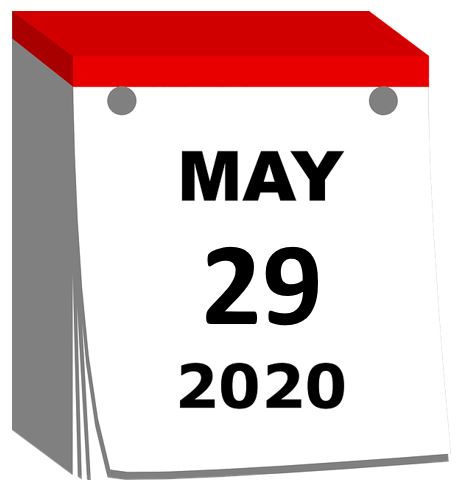
What are the components of an effective DEI Initiative?
Corporate America has been activated to reframe goals and strategies around DEI, which is an important step forward. But how certain are we that the right solutions are being put in place—solutions that will lead to change not conflict? On one hand we are seeing increased investment in advancing racial equity and CEOs are signing racial equity pledges. On the other hand, as organizations seek to integrate DEI into their business strategies, there is resistance and hesitation to want to talk about race at all. In some circles there is a concern that there is too much focus on race. So where do we begin?
What is the business challenge or opportunity being solved?
This is often the first question we ask clients when discussing their interest in our products and services. The answer they provide helps us tie our solution to a desired outcome – one that directly addresses the identified opportunity or challenge.
Articulating the problem up front increases the degree to which a successful result can be achieved. Organizations can focus on solutions that help frame or reframe the stated problem and create measures to capture their level of success toward goal achievement. Those measurements, in turn, can inform a long-term strategy and next steps.
But before measuring progress, implementing training, and reporting impact, it's good to set a meaningful benchmark. Many organizations are using what Dee C. Marshall calls the “Diversity Turning Point” of May 29, 2020, and asking these questions:
• What was in place prior to this date?
• What has taken place in the organization since May 29, 2020?
• Has the culture shifted? Was the shift positive or negative?
• What’s the plan to move forward?


As answers to these questions emerge and are solidified, organizations are ready to move into The 5 Rs of Diversity, Equity, and Inclusion: Real Conversations, Representation, Respectful Relationships, Research and Results.
R#1: Real Conversations


When it comes to diversity, equity and inclusion, it’s not enough to hold listening sessions or focus groups if there is no true intent to address the issues or follow up on what was shared. It’s also not the time to “sugar coat” the issues. Real conversations require trust, authenticity, transparency, accountability, and action. A conversation that’s real is oftentimes raw and designed to surface hidden issues and challenges that need to be addressed.
To engage in a Real conversation:
- Spark meaningful discussions by asking the right questions. For instance, the question “Is it positive discrimination if we hire a BIPOC candidate over a White candidate without justification?” requires a thoughtful response and consideration of various points of view. It’s not a simple yes or no response and will likely yield the kind of passionate energy that can provide insights into the fundamental beliefs of respondents. This type of question can also highlight the difficulty in achieving equity in organizations where the employees most suitable for promotional opportunities may be disproportionately White due to years of affinity bias that kept BIPOC employees from being “tapped” for advancement. Another great conversation starter might be: “Are we "tapping” talent because of relationship" or, "are we following a recruitment and selection process that can minimize our affinity bias?” This type of question has the same effect as the first and moves organizations closer to deep and meaningful conversations.
- While engaged in talent management discussions, challenge conversations that focus on personal characteristics versus performance and results. Here’s an example: if a male who is known to have young children implies that a female may be unable to take on additional leadership responsibility because she “has her hands full with 4 kids at home,” someone in the room should ask the male how many children he has at home. Switching up the roles helps to reframe and challenge the conversation. The number of children (or lack thereof) someone has should have no bearing on whether the person can perform at the next level.
- Other Real conversation starters:
› Are we saying we want to help employees with known skill gaps but failing to invest in the training that will close those gaps?
› Are we growing our in-house talent, or cutting the bottom 10% and hiring new employees each year?
› Are evaluations and promotions based on personal preferences—like whether the leader likes or dislikes the employee—rather than job performance?
Real conversations inform strategy and capture the lived experiences of employees from both represented and underrepresented groups. In having these conversations, organizations can learn the “why” behind the effectiveness of their efforts to make progress in DEI.
R#2: Representation


DEI conversations are increasingly expanding to include issues surrounding policy, advocacy, and levers that shift power and create opportunities for economic equity. While attention to these areas is welcome, they must not overshadow the importance of improving representation in the work environment and the need for both visible AND invisible diversity.
Just as gender diversity can be measured by observing the non-binary spectrum of individuals within the organization, leadership diversity can be measured by examining how many members of marginalized groups are currently in leadership positions or in the leadership development pipeline.
Organizations should clearly delineate their future DEI representation goals. (One consideration might be to align representation goals with the makeup of the organization's customer/client population.) After these goals are set, a review of the current demographic makeup of the leadership team can be conducted, including an assessment of the talent pipeline and current pool of talent. It is important at this stage to determine if the level of diversity present will enable the organization to successfully reach its representation goals.
Note: Representation requires investment and engagement in the real conversations previously discussed. Decision makers need to be equipped with the tools to challenge those who make talent management decisions on criteria or characteristics that are not performance related. They must hold one another accountable for making decisions through evidence-based behaviors that can be discussed with individuals and used to inform those individuals’ personal and professional development growth goals.
R#3: Respectful Relationships


If an employee works full-time, (s)he will spend more waking hours with organizational team members than with family and friends. Work necessitates relationship because it requires connectivity between 2 or more individuals. And given that “people” are involved—people who bring their filters, backgrounds, and media- influenced biases to the workplace—maintaining a culture of respect around those necessary connections is important.
To build respectful relationships and connections, we are encouraged to become students of our co-workers, to get to know them as individuals... as humans. This requires a willingness to engage in difficult conversations and to honor the culture of the person with whom we are engaged--always interacting in a way that maintains their dignity.
Creating an inclusive work environment is imperative to employee well-being and organizational success, and it always starts with people and relationships.
When working alongside individuals day in and day out, effective communication alone is not enough to build and maintain respect -- connection is also required. According to John Maxwell, author of Everyone Communicates, Few Connect, “connecting is the ability to identify with people and relate to them in a way that increases your influence with them. And the ability to communicate and connect with others is a major determining factor in reaching your potential. To be successful, you must work with others. To do that at your absolute best you must learn to connect.”1
R#4: Research


It’s not enough to pay lip service to the work of DEI; accountability is required. One way to ensure accountability is to review data and analytics on people and trends, both within and outside the organization.
Recall that awareness is the first step to change. And it is much easier to navigate change when armed with insights that inform actions. For example, a 2019 Harvard Business Review article revealed that leaders named “recruitment” as the biggest obstacle to racial and ethnic diversity, while employees of color ranked “advancement” as the top obstacle. This example illustrates how research can help identify real versus perceived obstacles and build strategy that better addresses the needs of all parties.
Strategy based on limited information (e.g., the perspective of leaders only), runs the risk of overlooking or negating the lived experience of employees from underrepresented or marginalized groups. Taking the time to capture the insights from representatives of a variety of groups, using inclusive demographic questions, can help frame an issue where problems persist without creating a focus on any one individual or group.
Social network analysis is another way to identify exclusive trends or behavioral patterns within the structure of the organization. The addition of customer data to this research can capture additional impact points that translate into insights. For some organizations, it might be worthwhile to implement or revisit a Workforce Segmentation Study, with a focus on inclusivity across hiring, mobility, performance, retention, recruitment, skills development, roles, and span of control.
No matter the methodology, the goal for organizations is to leverage data to identify the current state of inclusion, advance knowledge, and explore ways to improve workplace culture and inclusivity overall.
R#5: Results


When a diverse and inclusive workplace exists, there are real, tangible benefits to the organization's bottom line. The question is, where does the organization want improved results? Is it in: representation, culture, engagement, talent development, or movement metrics? Once these questions are answered, organizations can seek to capture insights from available data and identify any new data needed to yield desired outcomes.
Results should be focused and specific to each defined group so that they may be compared within and across groups. If the sample size of any one group is too small, it may be indicative that focused inclusion efforts are needed in this area in order to change the current situation to a desired future state.
Organizations should think of DEI research as a kind of "Business 360". Included in the 360-assessment should be (a) the “boss” (e.g, clients / customers), and (b) “superiors” (e.g., the board of directors). These findings should then be benchmarked against peers in the industry (the competition) and others (the community at large) to determine where the organization stands compared to others and its own target goals. They should also be used to define any actions the organization will take. The process should be repeated in a year to see where successful results have (or have not) been achieved. This is the best way to get results in DEI.
Using the 5 Rs
If you want to secure executive buy-in for your DEI initiative, use the 5R’s to make your case.
1. Hold focus groups, conduct interviews, and find creative ways to engage in real conversations. Then, highlight what you learn.
2. Share your strategy for increasing both visible and invisible diversity within the organization.
3. Encourage respectful relationships using as a foundation the mission, vision, and values of the organization as well as defined policy.
4. Using available talent or people-data, conduct research to gain insights and inform strategy realignment or redirection.
5. Take action to achieve desired outcomes and results.
Ultimately, the goal is to cultivate positive culture change while minimizing culture clash.
ABOUT THE AUTHOR


LaTonya Jackson Ed.D., DEI and Organizational Culture Consultant
Highly skilled in collaborative partnerships, individual and group coaching, and people development, Dr. Jackson has served as Learning and Development Manager at Walton Enterprises and as Human Resources Director for Walmart.
She received a BSBA in Marketing and Finance at the University of Nebraska- Lincoln, a M.Ed. in Higher Education Leadership from the University of Arkansas, and a Doctor of Education in Workforce Development Education from the University of Arkansas at Fayetteville.
1 https://www.johnmaxwell.com/blog/the-great-leaders-guide-to-connecting-emotionally-with-others/







